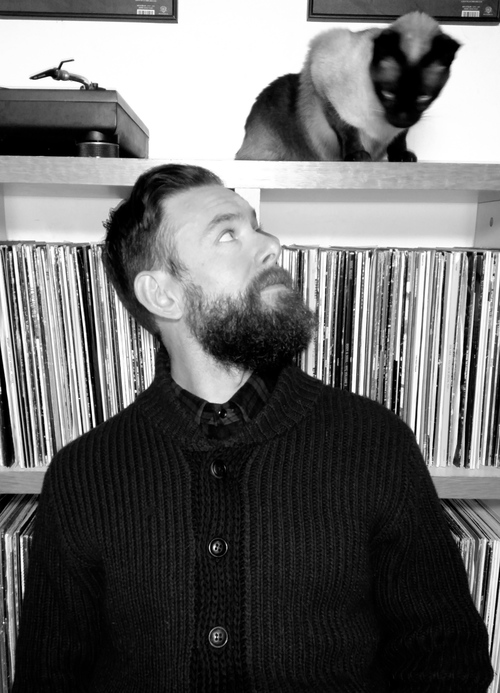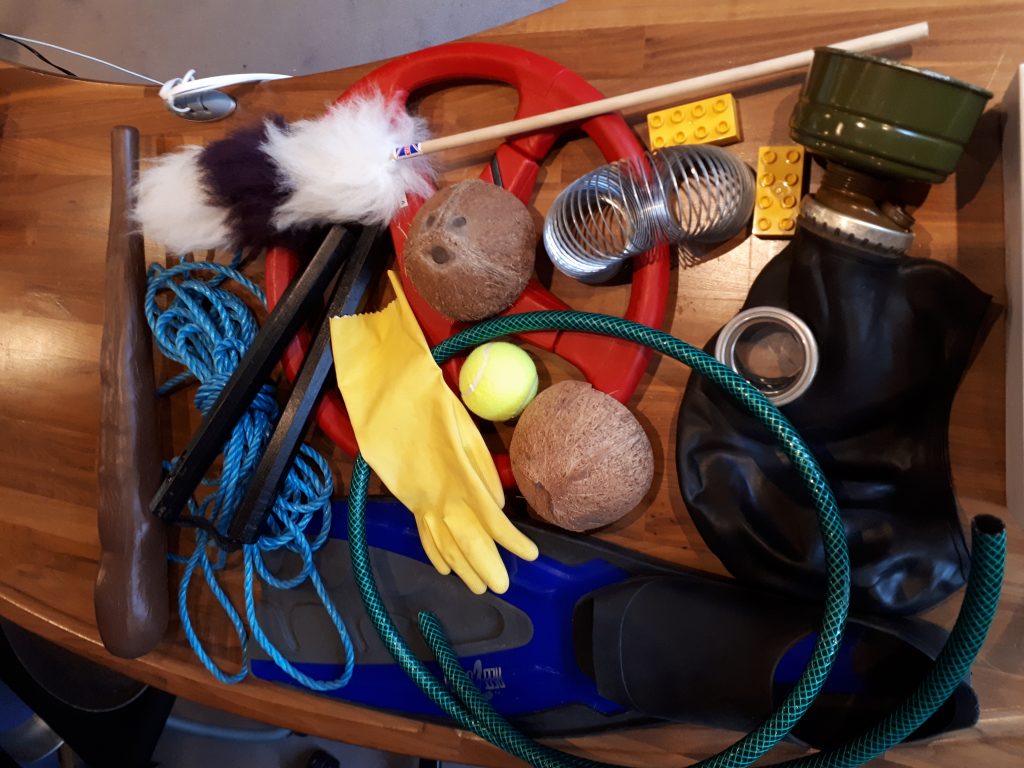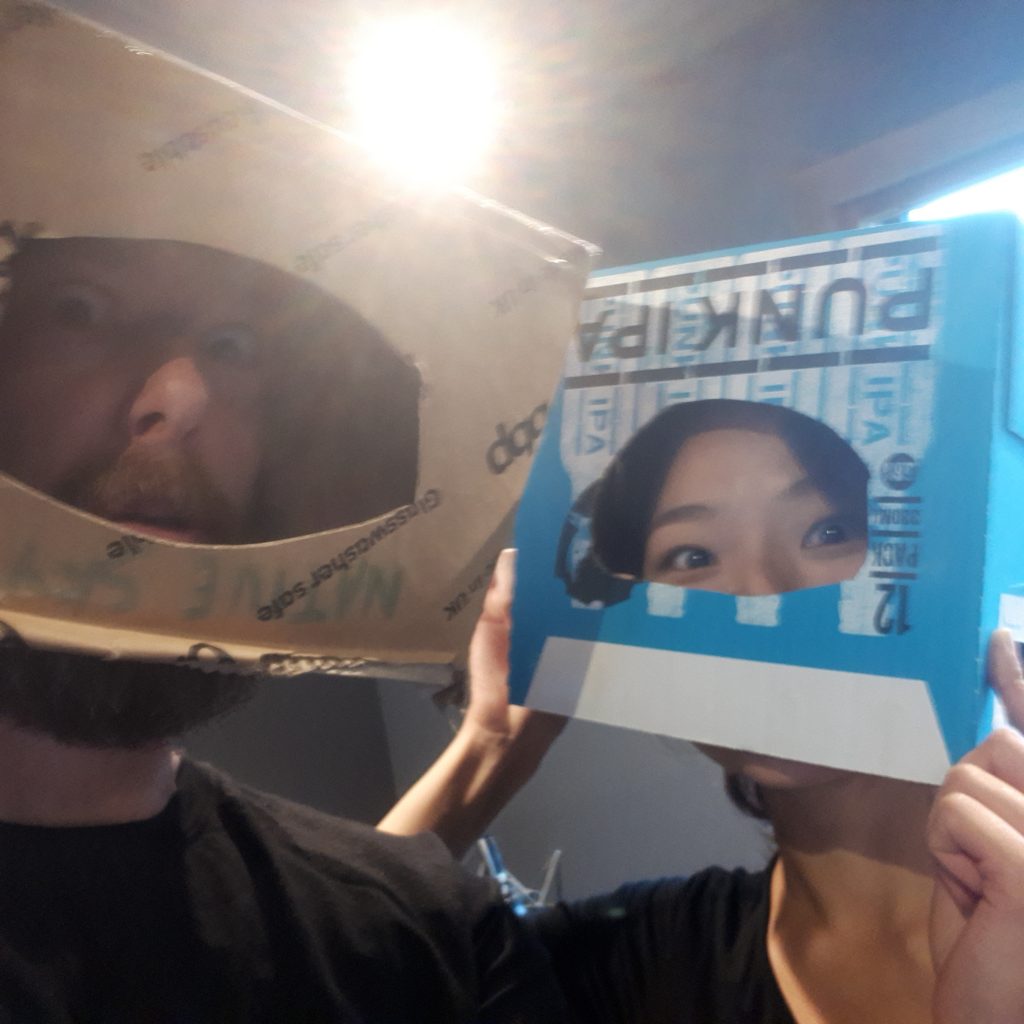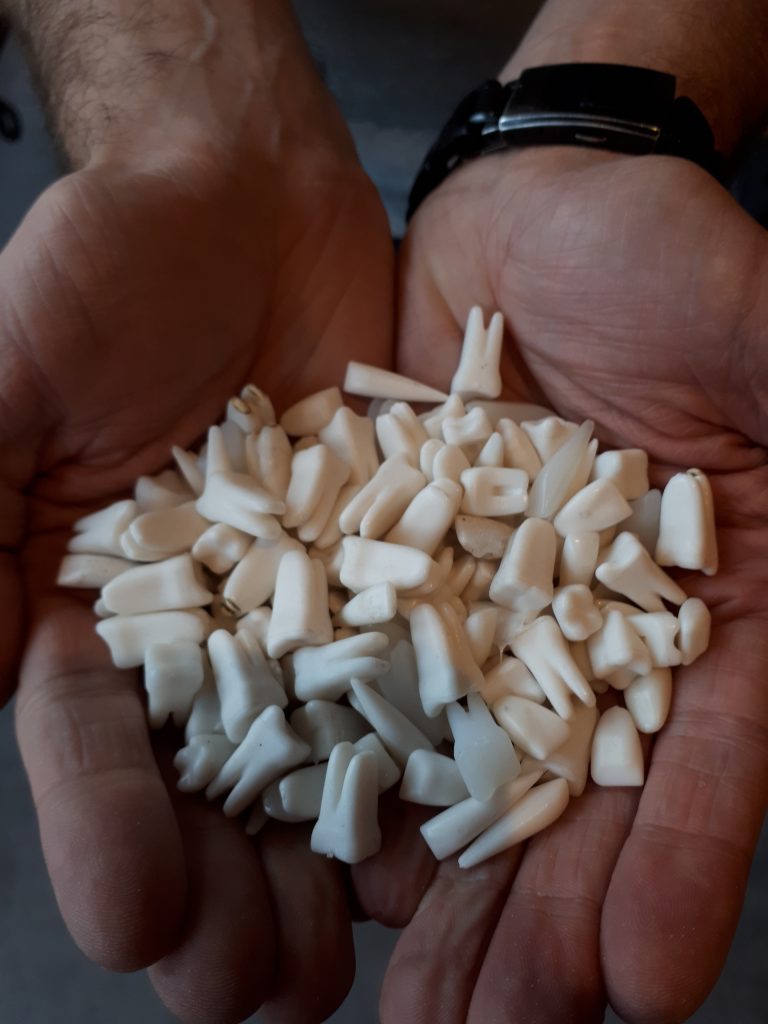
This is a guest contribution by Jim Griffin, Senior Sound Designer at award-winning Soho-based audio post production facility Jungle Studios. Foley is probably the most fun and creative element of sound design – here, Jim looks at some of the lengths he has gone to creating great sound and offers his tips on Foley.
Just a few days into my first job as a runner at what is now called Jungle Studios (then Zoo) I was dispatched to a local butcher to buy the front legs from a pig. Having persuaded a slightly dubious butcher that I wasn’t pranking him, I returned, clutching the legs. Five minutes later, I was on all fours, a leg in each hand, dubbing a pig scurrying through a leafy forest. God knows what the ad was (it was in the mid 90s). What I do remember was thinking how much fun I was having at work. So began my introduction to the wonderful world of Foley. Since then I’ve waterboarded myself, slapped myself in the face with a fish (more on that later) and my wife has hosed me down like a prisoner in the garden – all to create the sounds I’ve needed.
Foley is not just fun, though. It’s an essential part of the sound design process. Increasingly in advertising we’re seeing budgets cut, and as the location record is one of the first things to go, we often receive ads with no sync sound. As a sound designer, it’s up to you to recreate the sounds behind what you see on screen – from the space itself to footsteps and clothing rustle – and ensure it sounds credible and connects with the audience.
One of my most memorable Foley projects took place earlier this year when I worked on an ad for the RNLI called Float to Live. In it, numerous people fall into cold water and have to fight their instincts to swim hard so as to conserve their energy and not go into shock. Their disturbing, floundering action sequences were filmed in a large tank at Pinewood, but the small amount of audio they recorded was unusable because of the reverberant environment. You could hear it was inside. The location recordist tried to pad out his material by recording some extra stuff at home in his bath (I could tell!). So I was faced with the problem of how to recreate an outdoor, mostly underwater environment in a Soho voiceover booth.
[perfectpullquote align=”right” cite=”” link=”” color=”” class=”” size=””]This is the sort of problem that as a sound designer you encounter when you try out sounds. When you consider that Ben Burtt took a whole year to perfect Wall-E’s voice, a few hours-worth of unusable takes has to be seen in context.[/perfectpullquote]
The biggest vessel we had to hold water was a large metal bath-tub-like trough, but that also meant that if I hit it anywhere on the sides I got a nasty metallic ring. So I used a hydrophone which I padded with a cloth against the bottom of the tank and then proceeded to carefully drown myself over and over again to produce the required underwater struggle sounds. I also placed a mic above the surface so I got some nice transitional sounds going from under to above the water line. Not perhaps what I would call fun but it made for a memorable couple of days!
The next problem I encountered was that gurgles and splutters can sound quite comedic even though they are produced in a credible environment. This is the sort of problem that as a sound designer you encounter when you try out sounds. When you consider that Ben Burtt took a whole year to perfect Wall-E’s voice, a few hours-worth of unusable takes has to be seen in context. My way around this was to record a large quantity of sounds with as many different people as possible so that I had lots of material to play the director. The job turned out really well and I think the recorded Foley really helped to make it cut through to the audience.
What else have I discovered along the way? Below are some of my tips for creating great Foley and having fun whilst doing it:
Tools

At Jungle, our Foley toys are stored in a large room occupying half a floor in our building. It’s like an Aladdin’s cave with multiple crates stacked floor to ceiling full of metal, wood, glass, plastic, rubber and any other material that you can think of. You’ll find some strange stuff in there like a large bucket filled with thousands of plastic teeth (I’ve never asked why they’re there) and a worrying amount of dildos (again I’ve not asked). There’s even an old mechanical parking meter mechanism in there. Its various springs, cogs and flip switches have been used on the sound track of many ads. The more material available the better when doing Foley as it allows for more experimentation.
Experimentations
My thought pattern when approaching Foley goes something like this: ‘What if I hit this with this while it’s sitting on top of that, or what if I hold this so it doesn’t ring and drop this on top of that?’ Basically experimentation. In this way I can get sounds that not only suit the action but also sound really cool, are rich in texture and in the appropriate circumstance can grab the audiences’ attention.
Fun

The more playful and inquisitive you are about sounds and what creates them – and the amount of times you are prepared to spend bashing a piece of wood or placing a cup in sometimes minutely different ways – the better a Foley artist you’ll be. A good example of this is Wilbur, British Gas’s cuddly penguin mascot to whom I applied what I call the ‘Predator principle’ for his Foley.
In the 1980s movie Predator, the eponymous creature needed three different Foley items to dub each of his movements. They were a wet leather purse, hand lotion on hands and a wet leather chamois. So for Wilbur’s flippers I created my own three layers; a rubber glove, a piece of wetsuit-like neoprene material and a deflated inflatable toy that produced a satisfying rubbery squeak. One of my colleagues who’s a drummer assisted me and his brilliant timing enabled us to dub the penguin’s movements in a minimal amount of passes.
Rhythm
Being rhythmically talented is very helpful for Foley – as is the ability to break rhythm. Good reflexes are also a definite plus. An example of this is when creating footsteps, quite a tricky part of Foley. Generally, the pre-recorded ones sound like something from The Archers or a BBC sound effects record from the 70s i.e. bad! At Jungle we have various surfaces (including a liberated paving slab) on which to walk the walk, but to get the right rhythm when dubbing footsteps, rather than watching the subject’s feet, watch their shoulders.
Inspiration
Like all things in life, there is always more to learn and I find the world of Foley artists very inspirational. YouTube is a great source of ideas. You can watch Jimmy McDonald demonstrate the amazing self-built contraptions he used during Disney’s heyday, or Ben Burtt using a reprogrammed graphics tablet to manipulate Wall-E and Evas’ voices. My favourite at the moment are Ethan Van Der Ryn and his crew, who sound designed the first Kung Fu Panda movie.
[perfectpullquote align=”left” cite=”” link=”” color=”” class=”” size=””]…but to get the right rhythm when dubbing footsteps, rather than watching the subject’s feet, watch their shoulders.[/perfectpullquote]
There are three action sequences in Kung Fu Panda that I think are the apex of what sound designers can achieve through great Foley recordings and masterful editing. Ethan and his assistants employ an old system. They work in a team of four which means they can create multi-layered sounds quickly. For example, to create the sound of the panda bear hero’s sloshing belly they combine these sounds – a rubber gloved fist punch, a hillbilly single string broomstick bass, a water cooler jug slosh and a cuddly toy being bashed – all at the same time. Add to this a suction type sound created by one assistant pushing a plunger onto another bald assistant’s head. This work ethic highlights the benefits of playfulness in the trade.
Recently, when working on a spot for Virgin Holidays, I used the scene from Kung Fu Panda where Dustin Hoffman’s character teaches the hero Po the necessary Kung Fu skills via his favourite medium – food – as my rhythmical inspiration. The spot, “Nifty Fifty,” follows an over 50s couple on a mind blowing holiday in various luxurious locations. Each scene morphs from one into the other, and there’s a sequence where, at a Japanese market the husband tosses a whole salmon in the air, twirls a samurai sword and the fish falls to the ground as perfect pieces of Nigiri. To create the lovely sticky, slappy sound of the fish I bought a load of salmon fillets and spent a happy half hour with a bowl full of honey and soy sauce slapping various fillets and cubes of fish together until I got the right sound and texture I was after. I remember thinking I must have looked like a madman, covered in sauce, slapping fish and at one point I even slapped the fish against my own face. Luckily I was alone at the time.
Equipment

Due to economics and convenience the sampler has, in general, replaced the assembly-line set-up that the Kung Fu Panda team employ. But the sampler is no less creative in the right hands. The combination of automated effects, filters and pans can produce beautiful multi-dimensional sounds.
The sampler’s role became very important in the sound design for the Virgin Holiday ad. It was important to get the correct and satisfying dum, dum, dum rhythm as the three nigiri pieces slapped down on the ceramic plates, and this took some time with layering of multiple takes and experimenting with different rhythms.
[perfectpullquote align=”right” cite=”” link=”” color=”” class=”” size=””]Due to economics and convenience the sampler has, in general, replaced the assembly-line set-up that the Kung Fu Panda team employ. But the sampler is no less creative in the right hands.[/perfectpullquote]
Style
The style of this ad, the way the scenes morphed and the action within them was fantastical, so the tone of the sound design and Foley had to reflect that. The balance was therefore between realistic and cartoon style noises to make the action pop. Where this ad needed attention grabbing sounds, other ads are the opposite. When working on a short film project about the Shetland Pony Grand National I was asked by a colleague if I’d done any Foley as they couldn’t hear any. That was really satisfying to me as I’d fooled their ear and not distracted from the storytelling. To be able to blend sounds seamlessly into the action is very rewarding.
Cliché
Try to avoid the clichés. One of the modern clichés of Foley and sound design is that a person only has to look at a bladed weapon, let alone touch it, for it to make a cool ringing sound. The same is true for guns making the loading noise when someone has only moved them minutely and microphones that suddenly feedback as soon as they are touched. It drives me crazy but hey it’s better for us designers! So in ads where I’ve dubbed things like swords I’ve always tried to find new ways to create these sounds. In the Virgin Holidays ad, for the samurai sword I brought lots of kitchen utensils into the studio, tied them to string and played with twirling them close to the microphone until I found a particular whippy-ness that I liked. The winning implement was a long-handled metal spatula with slits in its blade. The slits made it spin furiously and this produced a really cool “slicey” sound.
…
With Foley, anything goes so have fun, experiment and don’t be afraid to be messy. Doing Foley, you’re going to make a lot of it, so you need to create an environment where you can be relaxed about being messy and won’t endanger the equipment or the furnishings. I use a lot of large rubber catering trays (they usefully deaden the sound as well as being practical) and have even been known to move up to a Dexter style kill room set up with plastic sheeting everywhere.
Thanks to Jim and Jungle Studios for contributing to this month’s theme. You can learn more about Jungle Studios over at their website.
[…] https://designingsound.org/2017/09/the-fun-of-foley/ […]